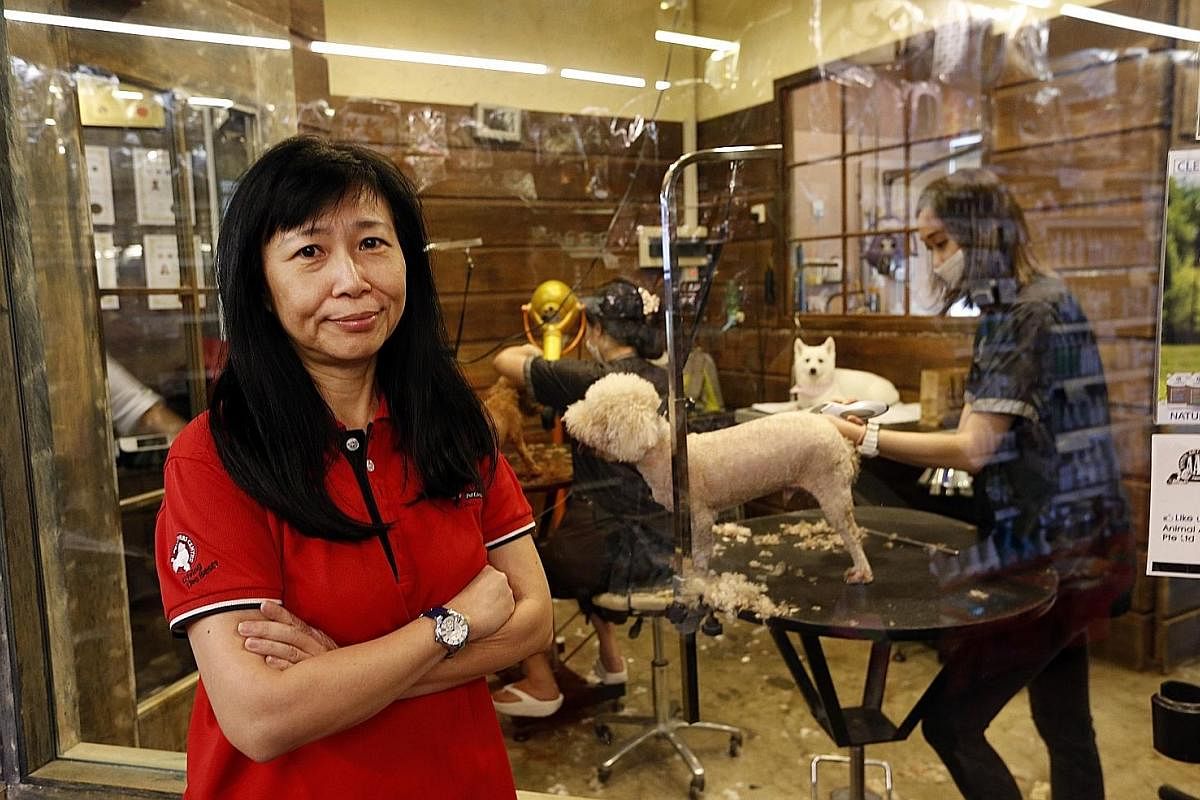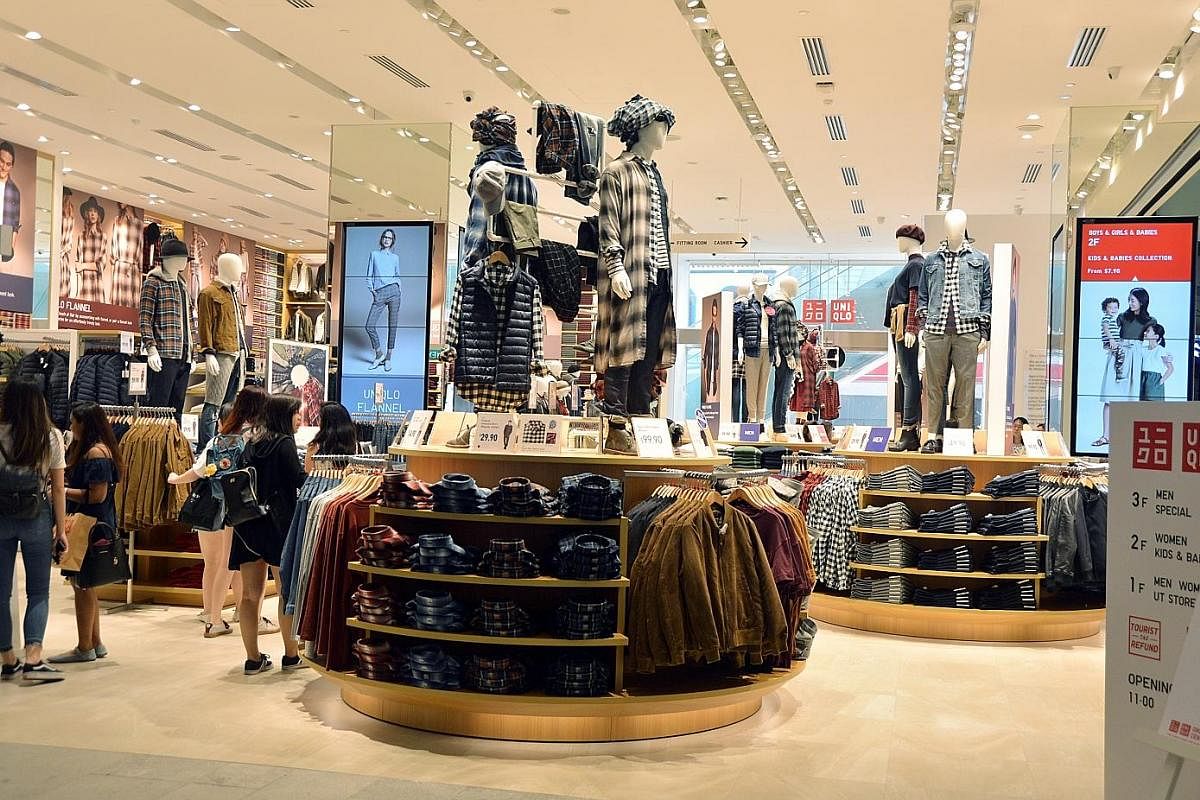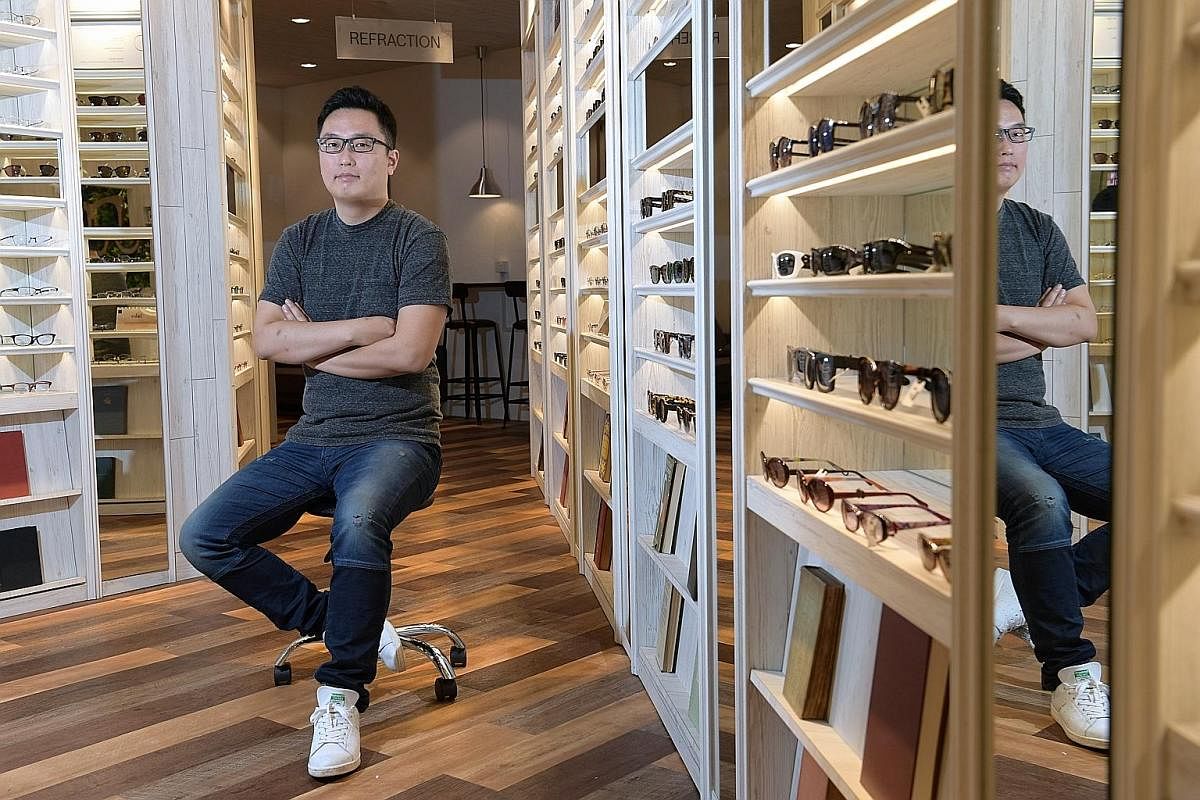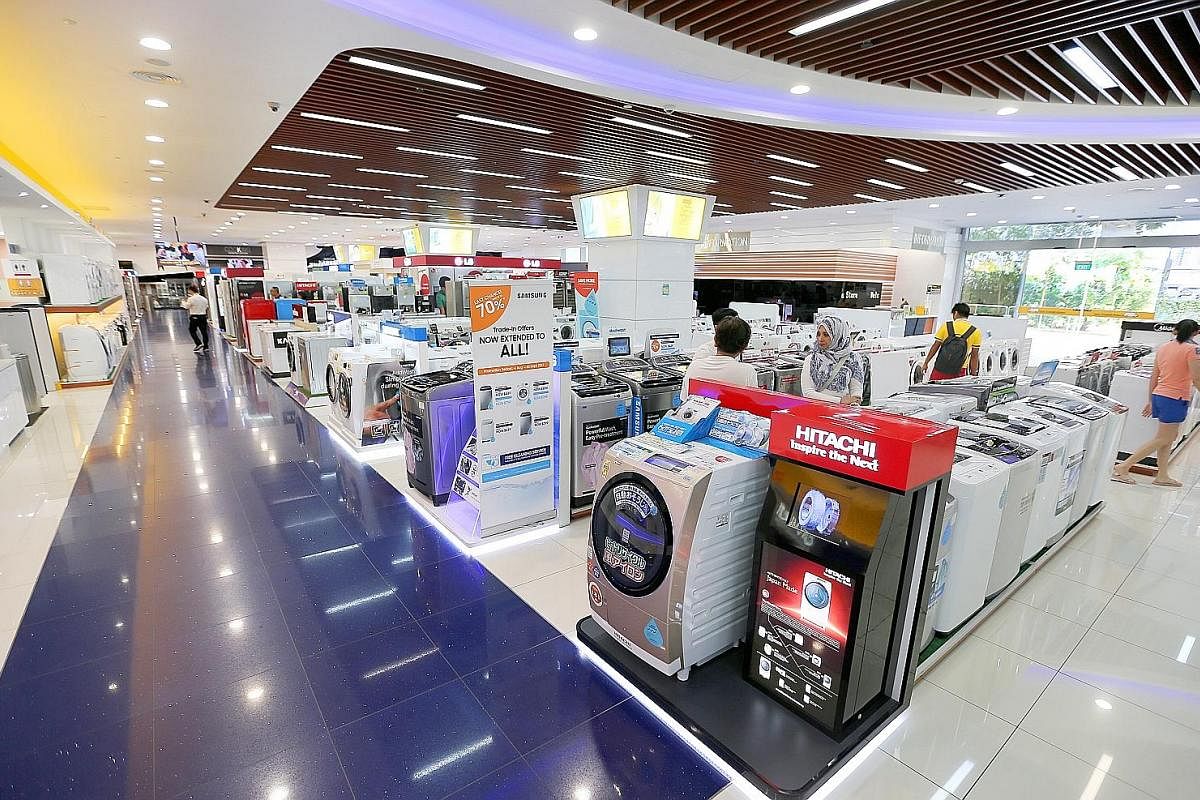Buoyant businesses weather a retail downturn
Not all retailers are feeling the bite of a retail downturn. Here are four that are not only surviving, but are also flourishing




Flip through any recent report on the retail industry in Singapore and it is likely to read like a chapter on gloom and gloom: think volatile sales figures, declining foot traffic and a growing number of shuttered stores in malls.
In January this year, the oldest department store in Singapore, John Little, ended operations for good after 174 years - its closing no doubt adding to the islandwide vacancy rate of retail space, which had risen to 8.1 per cent by June this year, according to figures from the Urban Redevelopment Authority.
That figure is expected to move steadily upwards, given the high manpower costs, rising rentals and stiff competition from online retailers.
Furthermore, Singapore's strong currency has proven to be a double-edged sword, making the island increasingly expensive for tourists.
Despite the retail woes, there are those who are managing to not only survive, but also grow amid the retail downturn.
Instead of hunkering down and waiting for the storm to pass, these retailers have turned obstacles into opportunities by investing in strategies to make the retail experience more exciting for their customers.
Experiential shopping, a wide product selection, business consolidation and omni-channel sales are just some ways that retailers here are helping their companies stand out from the competition.
Four firms that have managed to buck the downward retail spiral share the secrets of their success.
Pet Lovers Centre
Since starting operations in 1973, home-grown pet store Pet Lovers Centre has grown into a mega retail operation in Singapore - with 65 outlets across the island.
The secret to its long-term success in retail? Taking customer feedback seriously and constantly expanding its range of offerings.
"When the business started 44 years ago, we sold only pet food and accessories. But over time, we noticed a growing demand from pet owners for new products and services," says the company's senior marketing manager, Ms Christine Tan.
Constantly innovating, the company has expanded its offerings to live animals, freshly baked pet treats and the largest range of pet food and accessories available in Singapore.
And it provides grooming, as well as services such as pet boarding and pet taxis through partnerships with other companies.
Another result of customer feedback has been Pet Lovers Centre's line of in-house pet food and treats named Burp! and pet toys, called Trustie.
"When we noticed more customers looking for premium products at affordable prices, we decided to develop our own line," says Ms Tan of its products, which are mostly manufactured in Britain.
Among its many stores in Singapore, four are themed ones called The Pet Safari.
These are about four times the size of regular Pet Lovers Centrestores, which average 1,000 sq ft each.
The Pet Safari stores have different themes such as Bow-Wow- West at Nex in Serangoon, which is designed to look like saloons from the wild West; and a Caribbean theme for its store at VivoCity.
Though Ms Tan declined to reveal revenue or sales figures, she added that the company is currently focused on its regional expansion plans.
It has 29 stores in Malaysia and another eight stores across Thailand, Vietnam and Brunei. Expansion plans are in the works for the Philippines and Cambodia.
At the larger Pet Safari stores in Singapore, customers are encouraged to shop with their pets and the layout is designed to be spacious enough to allow for this.
There are also pet-care consultants in each store - identified by their blue uniforms - who offer veterinary-related assistance to customers. This service is also available online through its e-commerce platform.
According to Ms Tan, what has helped Pet Lovers Centre to continue to ride the retail wave is the sheer number of options that it offers.
"We want to offer the consumer everything he might need when it comes to his pet - from food to grooming to advice. It has required us to constantly think ahead and innovate," she says.
"It is true that consumers are increasingly demanding these days, but they are also discerning and more willing to spend on things that they see have good value.
"Being able to offer that is what has made our business more economically resilient over the years."
Uniqlo
The trendy catchphrase in retail these days is "omni-channel", or the idea of engaging consumers through various different platforms.
Japanese fashion retailer Uniqlo has taken omni-channel retail to the next level by engaging with consumers through its stores, stellar e-commerce platform, online newsletters and through a variety of social media platforms such as Instagram and Facebook - sometimes all at the same time.
Since launching in Singapore in 2009, the brand has expanded to 24 stores across the island, and its newest store will open soon in Changi Airport's Terminal 4.
Uniqlo could not offer specific revenue figures for Singapore.
At the brand's South-east Asian global flagship store at Orchard Central, which opened last year, 286 television screens take centre stage, displaying photographs curated from the brand's Instagram account. The pictures are uploaded onto Instagram by the store's Singapore customers and show things such as outfits of the day featuring Uniqlo pieces.
The music played in the store is produced specially for the brand by local artists. And exhibitions and live events such as product customisation, calligraphy, craft- making or flower arrangement sessions take place on the third floor of the 29,100 sq ft store every weekend.
Uniqlo also frequently brings in experts stationed in stores to advise customers on how to style items and take care of their denims.
According to Uniqlo Singapore's marketing and public relations manager, Ms Sim Yunying, succeeding in today's challenging retail environment increasingly requires retailers to engage with consumers through as many ways as possible.
"We wanted our flagship store to really connect with the local community," she says.
"Consumers these days are looking for more than just a place to purchase items - they are hungry for knowledge and you need to offer more than just an efficient transaction."
For those who prefer to shop online, its e-commerce site, which was launched in 2014, offers free shipping for purchases above $60, same day delivery from Mondays to Fridays and convenient collection at POP stations.
There are also exclusive deals available at both e-commerce and brick-and-mortar stores, encouraging consumers to constantly engage with the brand through different portals.
"We want to connect with customers and encourage our consumers to inspire other Uniqlo shoppers both online and in-store," says Ms Sim.
Gain City
Convenience and consolidation is the name of the game for home- grown electronics giant Gain City.
Its newest megastore in Sungei Kadut, housed in a 500,000 sq ft building, opened in 2015. The store offers more than 100,000 sq ft of retail space, andhouses all the store's offerings under one roof - including its air-conditioning business, consumer electronics arm and its newest foray into home furnishing.
Also situated in the building - which Gain City owns - are the brand's warehouses, a large event space and even its own petrol pump for its fleet of 180 delivery vehicles.
For Mr Kenny Teo, managing director of Gain City, retail challenges faced by the brand sparked the idea of buying land and building its own megastore and warehousing facilities nearly six years ago .
"Rentals were getting higher and higher, which meant retailers like us had to shrink shop sizes to afford the rents," the 46-year-old says.
"At the same time, electronics such as televisions and fridges are getting bigger, so we could display less and less in our stores."
Mr Teo also realised that consumers were getting more discerning - often doing research beforehand and demanding more bang for their buck.
His solution? Build a one-stop shop - making shopping more convenient for the consumer and allowing the company to operate the business more efficiently, given that its displayed merchandise, inventory and after-sales counters were all located in one facility.
"The space in the megastore allows us to showcase entire product ranges so that consumers can compare them on the spot," he says of the 11-storey complex that cost more than $70 million to build.
"Consolidating our three warehouses into one building also meant we cut down nearly 30 per cent of our overall costs. Savings are passed onto the consumer."
Though the Sungei Kadut megastore in an industrial estate in north-western Singapore can be considered out of the way, Mr Teo tries to make a customer's trip there as fuss-free and as pleasant as possible.
The store offers frequent shuttle buses to two MRT stations, a gaming area to keep children occupied, a cafe and foodcourt for a quick snack, and open-plan kitchen concepts, which offer live cooking demonstrations every weekend.
Most of the appliances are also plugged in and functional, which means they can be tested before they are bought. There is also a section offering special discounts on items every weekend.
Gain City also offers a personal shopper service, which can be booked online or over the telephone.
These staff members can help customers select items for their home based on their budget and needs.
Gain City's investment to improve the efficiency of its business has evidently paid off.
The 36-year-old business has grown 20 per cent year on year since the opening of the megastore and it attracts more than 10,000 customers every weekend.
And though Mr Teo says the company will continue to expand its smaller retail stores - Gain City currently has 10 stores around the island and there are plans to open three more by the end of the year - he says his consolidation strategy serves a unique purpose.
"The smaller stores are important for brand awareness, but the consumer visiting the megastore is obviously already looking to buy a big-ticket item," he says.
"Being able to offer customers everything they want under one roof is our goal and that efficiency and convenience is what keeps our customers returning again and again."
Owndays
Think getting a pair of spectacles means going to the optician and sitting in front of a display case, picking out frames to try on, then waiting days for the glasses to be ready?
No longer, thanks to Japanese optical brand Owndays.
The brand has shaken things up in the optical industry since it entered the Singapore market in 2013 - the company's first foray outside Japan.
For one thing, spectacle frames are not locked away in glass display cases and out of the reach of customers.
Instead, the 1,500 options available in its stores are placed on open shelves and customers can help themselves.
Also, its spectacles, including lenses, have budget-friendly prices of between $98 and $198.
The frames are designed and manufactured in-house, cutting out the middleman and greatly reducing costs.
Once payment is made, customers can collect their spectacles within 20 minutes. The spectacles are assembled in an open-plan room.
Owndays Singapore's managing director Takeshi Umiyama, 33, thinks the brand's retail success is in large part due to its constant innovation to make the shopping experience more efficient and hands-on for customers.
"When we entered the market, our store concept was revolutionary. Over time, more brands have begun to follow our retail concept," he says.
"To combat this, we have to constantly look for ways to better the customer experience, which is what will draw people back to the stores."
Over the past four years, Owndays has refreshed the layout and furnishing in its stores, adopting a more open concept and including more plants and light-coloured shelving to make the stores look more inviting.
The stores also increased the number of mirrors so that customers can easily check themselves out. It also made the spectacle- assembling room a feature of its stores instead of having it hidden at the back.
"Customers like to see where their money is going, so allowing them to see their spectacles being made is a way to engage them as well as build trust with the brand," says Mr Umiyama.
"Plus, we draw customers with our wide variety of options."
Its experiential shopping tack has worked. Owndays' revenue has grown from $4 million in 2013 to $36 million as of last year.
The number of stores has also grown to 23 over the past four years, with 10 more stores in the pipeline over the next 11/2 years.
"Consumers have higher expectations these days," says Mr Umiyama.
"It's not just about price anymore, it is also about trust and efficiency - if you can offer all three, then you are a valuable retail brand to a consumer."
Correction note: An earlier version of this story misspelt Ms Sim Yunying's name. We are sorry for the error.
Join ST's Telegram channel and get the latest breaking news delivered to you.
A version of this article appeared in the print edition of The Sunday Times on August 20, 2017, with the headline Buoyant businesses weather a retail downturn. Subscribe

